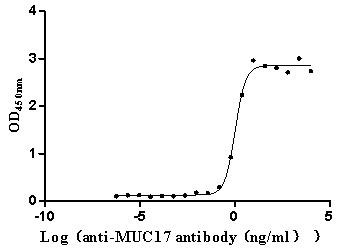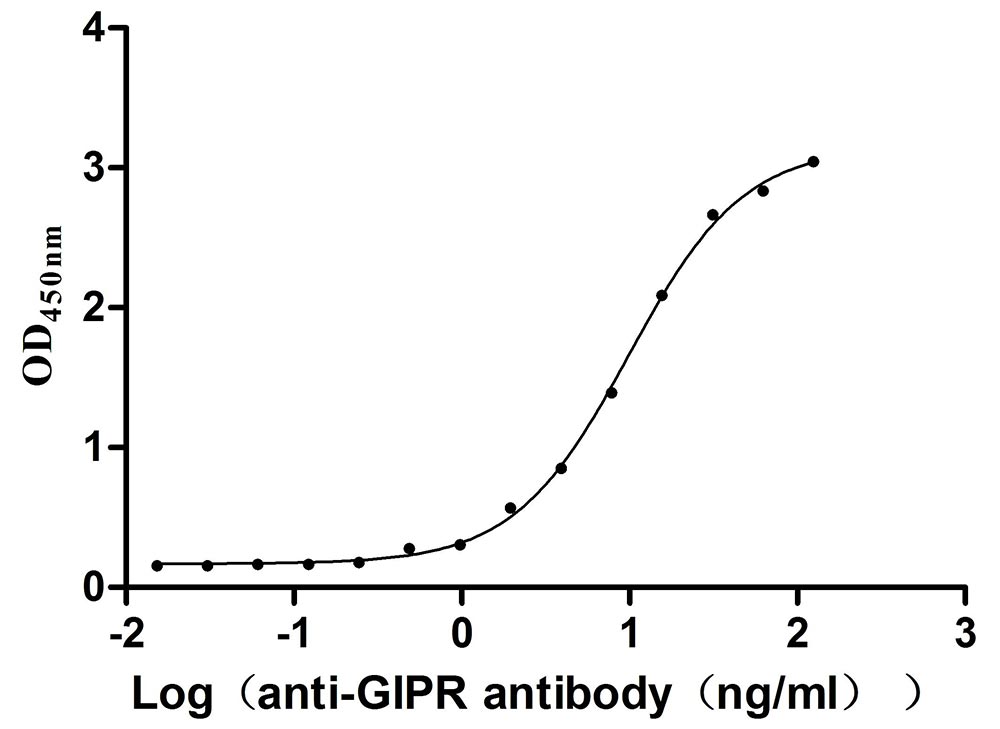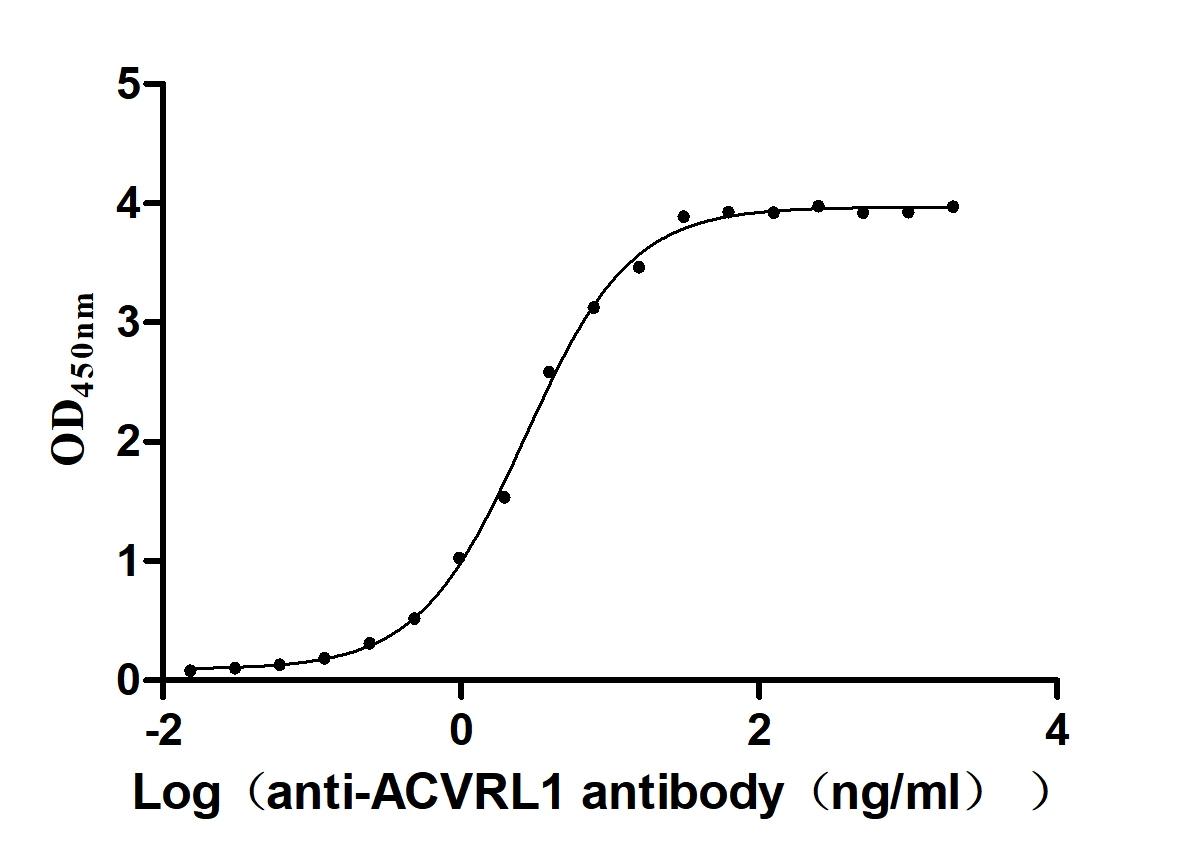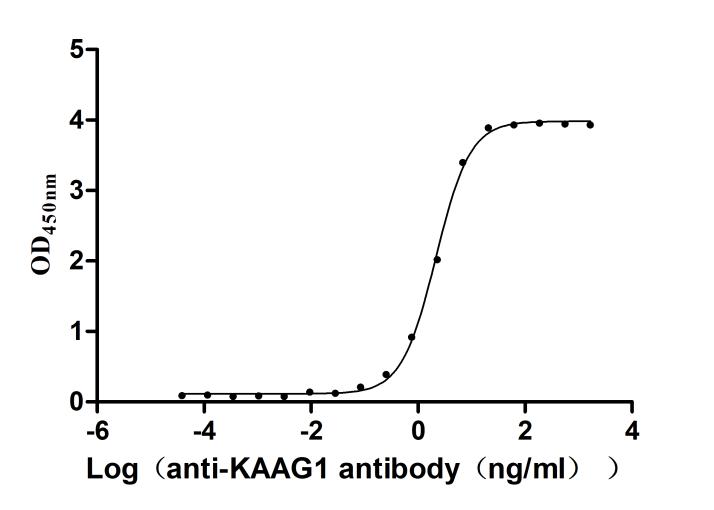Recombinant Mouse Bloom syndrome protein homolog (Blm), partial
-
中文名稱:Recombinant Mouse Bloom syndrome protein homolog(Blm) ,partial
-
貨號:CSB-YP002715MO
-
規(guī)格:
-
來源:Yeast
-
其他:
-
中文名稱:Recombinant Mouse Bloom syndrome protein homolog(Blm) ,partial
-
貨號:CSB-EP002715MO-B
-
規(guī)格:
-
來源:E.coli
-
共軛:Avi-tag Biotinylated
E. coli biotin ligase (BirA) is highly specific in covalently attaching biotin to the 15 amino acid AviTag peptide. This recombinant protein was biotinylated in vivo by AviTag-BirA technology, which method is BriA catalyzes amide linkage between the biotin and the specific lysine of the AviTag.
-
其他:
-
中文名稱:Recombinant Mouse Bloom syndrome protein homolog(Blm) ,partial
-
貨號:CSB-BP002715MO
-
規(guī)格:
-
來源:Baculovirus
-
其他:
-
中文名稱:Recombinant Mouse Bloom syndrome protein homolog(Blm) ,partial
-
貨號:CSB-MP002715MO
-
規(guī)格:
-
來源:Mammalian cell
-
其他:
產(chǎn)品詳情
-
純度:>85% (SDS-PAGE)
-
基因名:Blm
-
Uniprot No.:
-
別名:BlmBloom syndrome protein homolog; mBLM; EC 3.6.4.12; RecQ helicase homolog
-
種屬:Mus musculus (Mouse)
-
蛋白長度:Partial
-
蛋白標(biāo)簽:Tag?type?will?be?determined?during?the?manufacturing?process.
The tag type will be determined during production process. If you have specified tag type, please tell us and we will develop the specified tag preferentially. -
產(chǎn)品提供形式:Lyophilized powder
Note: We will preferentially ship the format that we have in stock, however, if you have any special requirement for the format, please remark your requirement when placing the order, we will prepare according to your demand. -
復(fù)溶:We recommend that this vial be briefly centrifuged prior to opening to bring the contents to the bottom. Please reconstitute protein in deionized sterile water to a concentration of 0.1-1.0 mg/mL.We recommend to add 5-50% of glycerol (final concentration) and aliquot for long-term storage at -20℃/-80℃. Our default final concentration of glycerol is 50%. Customers could use it as reference.
-
儲存條件:Store at -20°C/-80°C upon receipt, aliquoting is necessary for mutiple use. Avoid repeated freeze-thaw cycles.
-
保質(zhì)期:The shelf life is related to many factors, storage state, buffer ingredients, storage temperature and the stability of the protein itself.
Generally, the shelf life of liquid form is 6 months at -20°C/-80°C. The shelf life of lyophilized form is 12 months at -20°C/-80°C. -
貨期:Delivery time may differ from different purchasing way or location, please kindly consult your local distributors for specific delivery time.Note: All of our proteins are default shipped with normal blue ice packs, if you request to ship with dry ice, please communicate with us in advance and extra fees will be charged.
-
注意事項:Repeated freezing and thawing is not recommended. Store working aliquots at 4°C for up to one week.
-
Datasheet :Please contact us to get it.
相關(guān)產(chǎn)品
靶點詳情
-
功能:ATP-dependent DNA helicase that unwinds single- and double-stranded DNA in a 3'-5' direction. Participates in DNA replication and repair. Involved in 5'-end resection of DNA during double-strand break (DSB) repair: unwinds DNA and recruits DNA2 which mediates the cleavage of 5'-ssDNA. Negatively regulates sister chromatid exchange (SCE). Stimulates DNA 4-way junction branch migration and DNA Holliday junction dissolution. Binds single-stranded DNA (ssDNA), forked duplex DNA and DNA Holliday junction. Recruited by the KHDC3-OOEP scaffold to DNA replication forks where it is retained by TRIM25 ubiquitination, it thereby promotes the restart of stalled replication forks.
-
基因功能參考文獻:
- In the absence of BLM, sister chromatid exchange events do not occur randomly throughout the genome but are strikingly enriched at coding regions, specifically at sites of guanine quadruplex motifs in transcribed genes. PMID: 29348659
- The anti-recombinase activity of BLM is of general importance for normal retention of RAD51 at DNA double strand break sites and regulation of homologous recombination. PMID: 28912125
- BLM helicase facilites telomere replication by resolving G4 structures formed during copying of the G-rich strand by leading strand synthesis. PMID: 26195664
- Data suggest that BLM suppresses homologous recombination, while full-length BRCA1 promotes this process. PMID: 21709021
- Although interhomolog recombination is slightly decreased in the absence of BLM, loss of heterozygosity is increased by fivefold or more, implying significantly increased interhomolog crossing over. PMID: 21730139
- Blm has roles both upstream and downstream of the Rad54 protein, a core HR factor. Disruption of Rad54 in the Blm-mutant background reduced the elevated level of gene targeting and of sister chromatid exchanges. PMID: 20531307
- the characterization of Hprt mutations in vivo in Blm hypomorphic mice PMID: 20299287
- there was no dramatic qualititative difference in the basal cell carcionoma or rhabdomyosarcoma tumors associated with the mutant Blm genotype PMID: 19995795
- Data show that BLM-deficient mouse and human cells suppress homeologous recombination to a similar extent as wild-type cells. PMID: 20154148
- observations indicate that Blm is a modifier of tumor formation in the mouse and that Blm haploinsufficiency is associated with tumor predisposition PMID: 12242442
- Bone marrow cells from mice heterozygous for BLM mutation, BLM(Cin/+), transfected with BCR/ABL display increased sensitivity to cisplatin. PMID: 15750625
- Blm gene mutation produces this instability, strengthening a role for CIN in the development of human cancer. PMID: 16914751
- Blm serves a vital role for development, maintenance, and function of T lymphocytes, suggesting a basis for the immune deficiency in Bloom's syndrome. PMID: 17210642
- BLM, the RecQ DNA helicase mutated in Bloom syndrome, is preferentially modified by SUMO-2/3 both in vitro and in vivo PMID: 18708356
- A vital role is reported for RecQ family helicase Blm in all major aspects of the B cell life cycle, manifest in disturbed B cell immunity and tumor development in its absence. PMID: 19109166
- The sister chromatid exchange events stimulated by Tim reduction were largely mediated via a Brca2/Rad51-dependent mechanism and were additively increased by deletion of the Blm helicase. PMID: 19112184
顯示更多
收起更多
-
亞細胞定位:Nucleus.
-
蛋白家族:Helicase family, RecQ subfamily
-
組織特異性:Highly expressed in testis 12-14 days after birth (corresponding to the pachytene phase) and at much lower levels in brain, heart, liver, lung, thymus, kidney and spleen. Expressed in bone marrow.
-
數(shù)據(jù)庫鏈接:
Most popular with customers
-
Recombinant Human Leukemia inhibitory factor receptor (LIFR), partial (Active)
Express system: Mammalian cell
Species: Homo sapiens (Human)
-
Recombinant Mouse Prolactin receptor (Prlr), partial (Active)
Express system: Mammalian cell
Species: Mus musculus (Mouse)
-
Recombinant Human Claudin-18.2 (CLDN18.2)-VLPs (Active)
Express system: Mammalian cell
Species: Homo sapiens (Human)
-
Recombinant Human Mucin-17 (MUC17), partial (Active)
Express system: Mammalian cell
Species: Homo sapiens (Human)
-
Recombinant Mouse Gastric inhibitory polypeptide receptor (Gipr), partial (Active)
Express system: Mammalian cell
Species: Mus musculus (Mouse)
-
Recombinant Human Serine/threonine-protein kinase receptor R3 (ACVRL1), partial (Active)
Express system: Baculovirus
Species: Homo sapiens (Human)
-
Recombinant Macaca fascicularis Gastric inhibitory polypeptide receptor (GIPR), partial (Active)
Express system: yeast
Species: Macaca fascicularis (Crab-eating macaque) (Cynomolgus monkey)
-
Recombinant Human Kidney-associated antigen 1 (KAAG1) (Active)
Express system: E.coli
Species: Homo sapiens (Human)


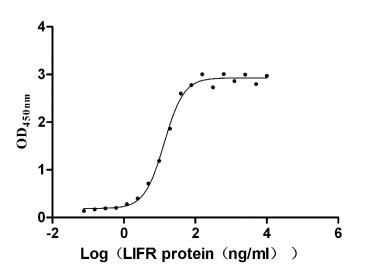
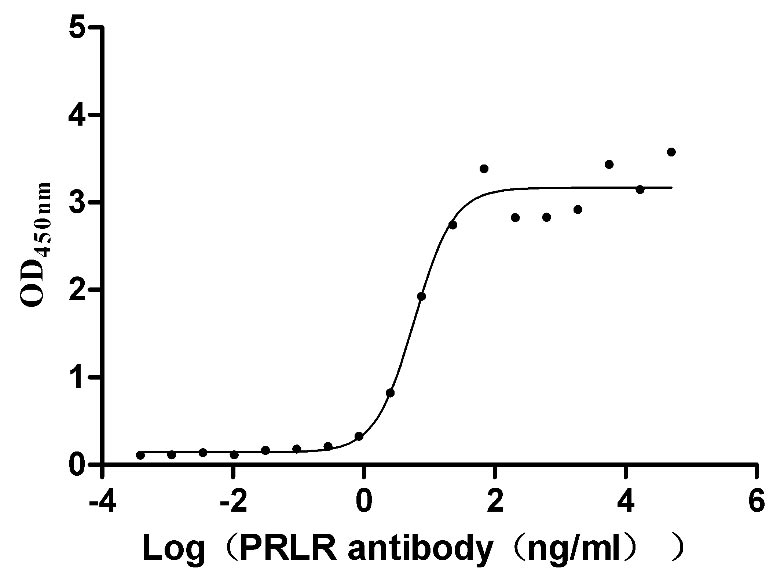
-AC1.jpg)
